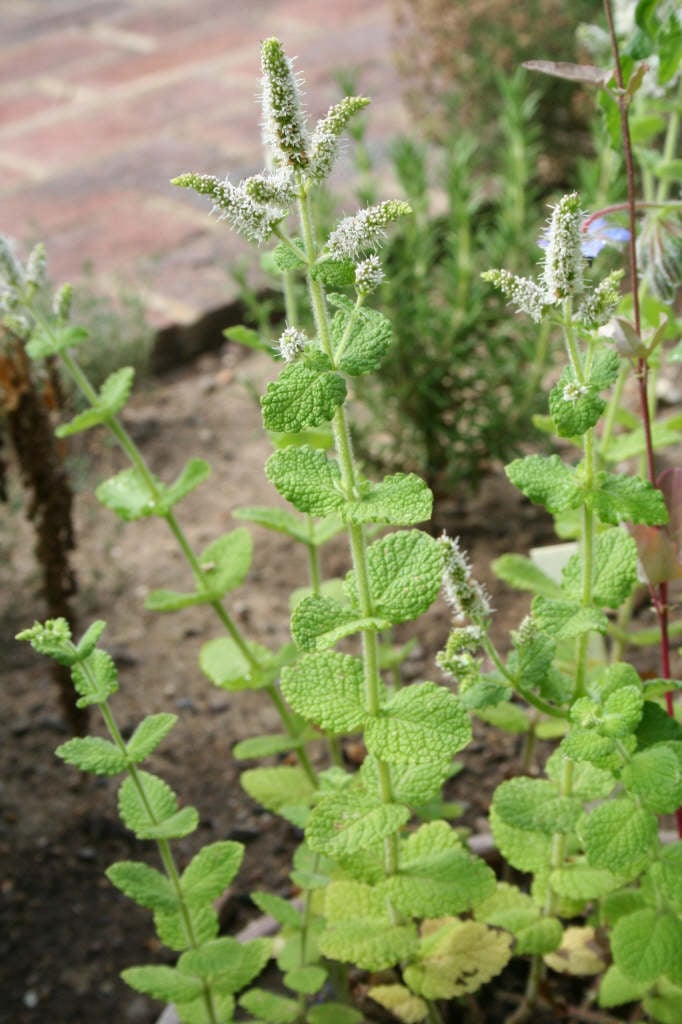Mentha suaveolens
apple mint
A vigorous rhizomatous herbaceous perennial to 90cm tall, with rounded, softly hairy, apple-scented leaves to 4cm long, and dense spikes of tiny pale purple flowers in late summer and early autumn
Synonyms
Mentha rotundifolia misappliedSize
Ultimate height
0.5–1 metresTime to ultimate height
2–5 yearsUltimate spread
1–1.5 metresGrowing conditions
Moisture
Moist but well–drainedpH
Acid, Alkaline, NeutralColour & scent
| Stem | Flower | Foliage | Fruit | |
| Spring | Green | |||
|---|---|---|---|---|
| Summer | Purple | Green | ||
| Autumn | Purple | Green | ||
| Winter |
Position
- Full sun
- Partial shade
Aspect
West–facing or South–facing
Exposure
Exposed or Sheltered Hardiness
H5Botanical details
- Family
- Lamiaceae
- Native to GB / Ireland
- Yes
- Foliage
- Deciduous
- Habit
- Suckering
- Genus
Mentha are aromatic, rhizomatous perennials with opposite, toothed leaves and small tubular flowers in spikes of whorls in summer
- Name status
Correct
- Plant range
- Europe, N Africa, SW Asia
How to grow
Cultivation
Grow in poor, moist soil in full sun. Can spread far and wide, and has the potential to become a nuisance so plant in deep containers and plunge these into the soil. See mint cultivation for more information
Propagation
Propagate by seed, sown in containers in an unheated greenhouse or cold frame in spring. Plant portions of rhizome any any time during the growing season; pot these up until they are established. Root tip cuttings can be taken in spring
Suggested planting locations and garden types
- Cottage and informal garden
- Patio and container plants
- City and courtyard gardens
- Coastal
- Banks and slopes
- Flower borders and beds
Pruning
Cut back at the end of the growing season
Pests
May be susceptible to green mint beetle, blue mint beetle, mint moth and sage leaf hopper
Diseases
May be susceptible to powdery mildews, especially during drought and mint rust
Get involved
The Royal Horticultural Society is the UK’s leading gardening charity. We aim to enrich everyone’s life through plants, and make the UK a greener and more beautiful place.
